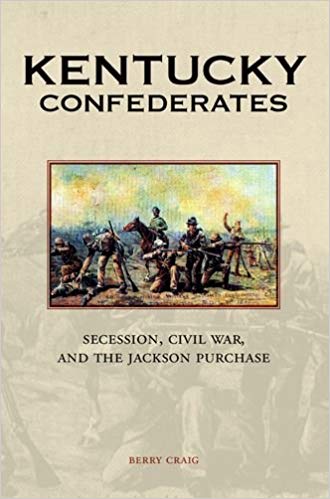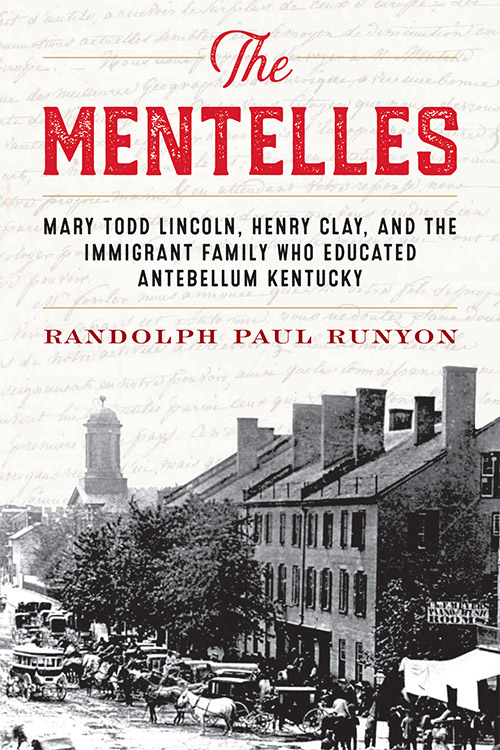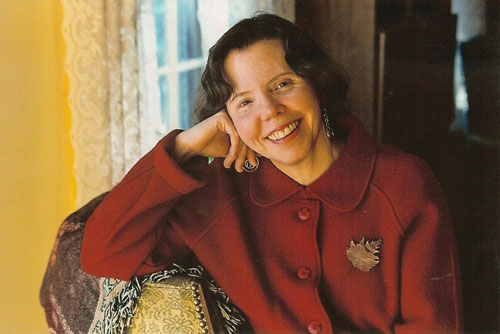[box_dark]To support Arts-Louisville.com, click here to make a donation![/box_dark]
Kentucky Confederates: Secession, Civil War, and the Jackson Purchase
by Berry Craig
Lexington: University Press of Kentucky, 2014
365 pp.
Review by Katherine Dalton
Entire contents are copyright © 2018 by Katherine Dalton. All rights reserved.
To read 19th-century newspapers is to see that the selectively reported, polarized and emotionally lurid press coverage we suffer from today is nothing new. We humans are highly partisan and prone to extremism, especially in times of high civic stress.
Newspapers and their correspondents during the Civil War in Kentucky—be they Secessionist, Neutral, or Unionist of the various stripes—are not necessarily reliable sources of facts. But they are good indications of the opinions of an editor and his set of readers, and in an era when so many records were lost or never kept in the first place, they remain an important primary source.
Berry Craig has read and cited many of them, along with a number of letters, diary entries, and military reports, for his detailed history of the war in “Kentucky’s South Carolina,” the Jackson Purchase.
Geographically isolated from the rest of the state, and Tennessee-learning due to location and settlement, the Purchase was the one part of Kentucky to send far more soldiers to enlist in the Confederate Army than in the Union.
It was in Mayfield that Kentuckians from the Purchase considered succession. (As far as the best evidence goes, given by a Union sympathizer who somehow witnessed the meeting, Kentuckians rejected that idea in the hope the entire state would eventually join the Confederacy.)
And it was in the Purchase that still-neutral Kentucky was first invaded by both armies: on September 4, when Leonidas Polk ordered the taking of Columbus, and on September 6, when Ulysses S. Grant’s forces arrived in Paducah.
All of this is discussed in great detail with a huge number of quotations in this book, and like all Civil War history, this makes for heart-rending reading.
Craig is an emeritus professor of history at Western Kentucky Community and Technical College in Paducah, the author of several other books, and a blogger for the progressive left. He makes no bones about being a partisan of the radical Republican side and has no criticism to make of Lincoln (a boon the President did not enjoy even from his own party in his own day), but he fairly describes the many harshnesses of this war, from the economic hardship and injustices of vote manipulation to the full martial law that came to Kentucky in 1864, so as to give the reader a good idea of what life was like all over the state during this time.
Yet some of his conclusions are at odds with the very evidence he takes great pains to cite. He is never able to resolve the contradiction of his view that the Civil War was primarily about slavery with the political reality that most Kentucky Unionists (as well as many other Unionists in other states) were pro-slavery.
Craig also tries to soft-pedal the accusations against certain Union commanders in the Purchase while citing plenty of evidence to indicate those accusations were justified.
One case in point is Eleazer A. Paine, an Ohioan who was a brigadier general for the 9th Illinois Infantry. He commanded a brigade at Paducah and then oversaw the Purchase as head of the District of West Kentucky, and there is a good evidence he acted as a despot in both roles. Craig lists a lot of the accusations, and they are convincing. Paine’s worst actions were his summary executions without trial of perhaps up to 40 or 50 men (and boys). He also embargoed trade within the region to the point of causing acute distress for lack of food and clothing, and banished 50 families on short notice for no apparent cause other than their Southern leanings to Canada, taking their land and homes and levying heavy fines as they left.
His actions led to an inquiry by Kentucky’s governor (a Union Democrat). When two Union Army officers arrived in Paducah to begin their investigation, Paine and his son left the state, and either took with them or ordered to leave every clerk who had kept their records. What records remained were so incomplete they were almost useless the investigation, and no one will ever know for certain how many men Paine ordered shot or on what grounds. That in itself is evidence, quite aside from witness testimony, and the findings of these two investigators condemned Paine in the strongest possible terms.
Consequently, and as Craig himself points out, most historians agree with History of Kentucky author Richard Collins that Paine’s governance of Paducah was “a fifty-one days reign of violence, terror, rapine, extortion, oppression, bribery, and military murders.”
Nonetheless, Craig prefers to take a view he finds buttressed by current Murray State Special Collections librarian Dietrich Ullrich, that Paine was the victim of character assassination due to the deep racial prejudice of the white people of Purchase. But Craig gives little evidence for this view other than quoting two partisans on Paine’s side: the Unconditional Unionist Lucian Anderson, and one of Paine’s admiring soldiers. While I would acknowledge that the testimony of a people under martial law will very possibly be biased against the presiding officer, that testimony is still evidence. It is also true that subsequent Union commanders did not come out of Paducah with Paine’s ugly reputation. Craig has not made his case—in page after page he has, in fact, made the opposite.
That said, Craig presents a great deal of information of all kinds which any individual reader can use to make up her own mind about Purchase’s Civil War. A tremendous amount of research has gone into this book, for which Craig should be thanked. Kentucky Confederates is a valuable contribution to our better understanding of our state.
This book was originally published in 2014; it is now available in paperback.
Katherine Dalton began working in journalism at The Yale Literary Magazine, during its brief period as a national magazine based at Yale. She has also worked at Harper’s Magazine and Chronicles, where she remains a contributing editor. She has written for publications ranging from the Wall Street Journal and the Baltimore Sun to the University Bookman and Harper’s Bazaar. Ms. Dalton is a contributor to Wendell Berry: Life and Work (edited by Jason Peters), Morris Grubb’s volume Conservations with Wendell Berry, and is currently at work on a book about farming. She lives in Kentucky.





